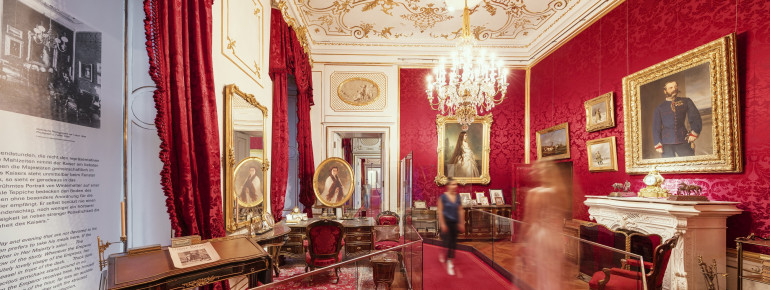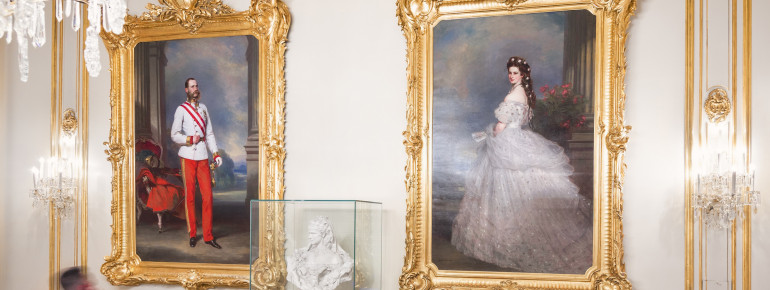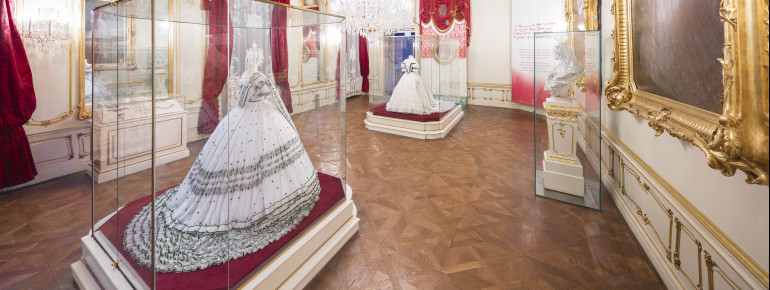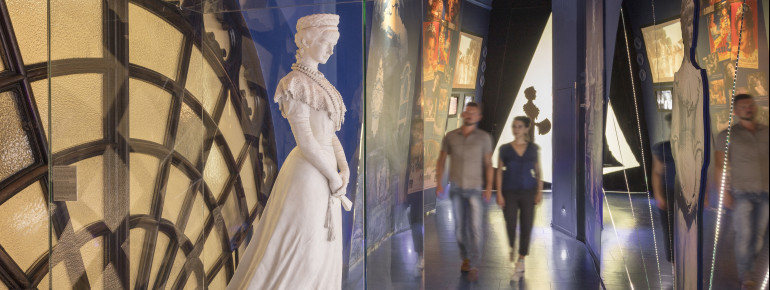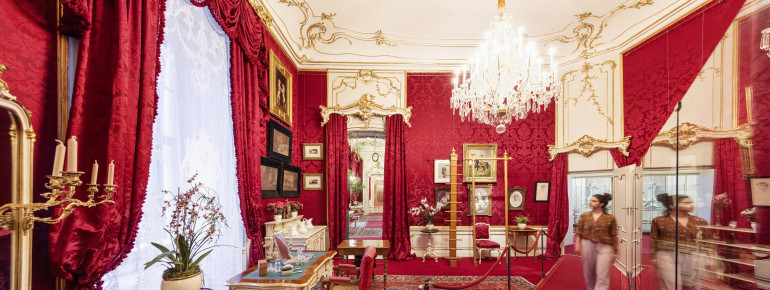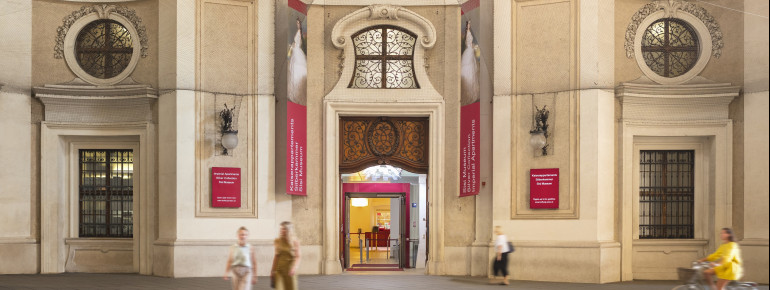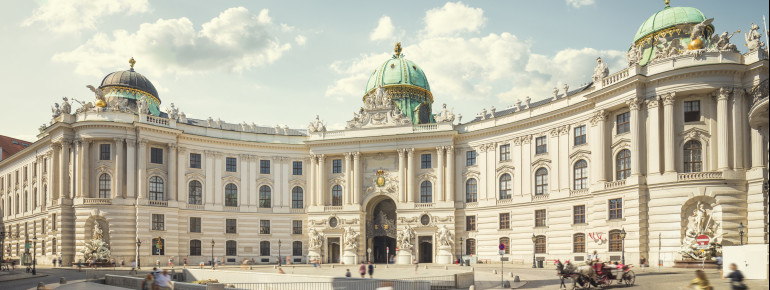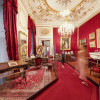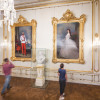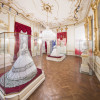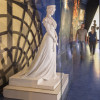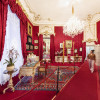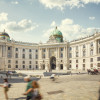Contents
Description
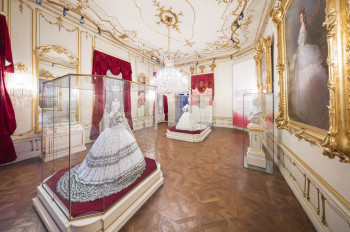
The Sisi Museum allows you to experience the imperial world of the imperial couple at the Vienna Hofburg and gain an overview of the famous Empress Elisabeth's life and work. You can visit the museum on your own with an audio guide or take a guided tour to learn more about the history. Admission to the Sisi Museum includes the rooms of the same name about the empress, the Imperial Apartments and the Imperial Silver Collection.
Sisi Museum
In six themed rooms, the Sisi Museum traces the history and personality of the famous empress. With over 300 exhibits, you can get an idea of what life must have been like for Sisi. The exhibits include original items of clothing, umbrellas, beauty recipes and a first-aid kit.
The tour of the Sisi Museum begins with the first room, "Death". Here everything revolves around the tragic death of Sisi and the myth that was born about the empress as a result. It is precisely this "myth of Sisi" that is examined in greater detail in the second room of the same name in the museum. The empress managed to go down in history as eternally young and beautiful. After her death, many commemorative pictures and postcards were designed, coins minted and monuments erected. Upon entering the third room, "The Girl", you are thrown back in time to Sisi's childhood. The core theme is her childhood in Bavaria. You learn how Sisi grew up from her birth in 1837 to her engagement to Emperor Franz Joseph in 1853.
The fourth room of the museum, "At Court", shows you the world of the court. Dresses from the farewell soiree and coronation as Queen of Hungary are faithfully reproduced. The fact that life at court for Empress Elisabeth was more of a nightmare than a fairytale dream is reflected in the penultimate room, "The Flight". Here it is made clear how much the empress withdrew more and more. From now on she pursued equestrian sports intensively, wrote poetry and travelled a lot. She also attributed great importance to maintaining her beauty and underwent numerous cures and care rituals. All these habits seemed strange to the outside world and were not universally understood.
As for the following period, after her son Rudolf committed suicide in 1889, she only wore mourning clothes and exchanged her jewels and precious stones for black glass beads. The tragic end of the empress's life is told in the sixth and last room of the Sisi Museum. Sisi died in a dramatic assassination attempt by the anarchist Luigi Lucheni as a result of internal bleeding. There is a first-aid kit, as well as a black cloak, which was supposed to protect the unconscious empress from gazes during transportation.
Imperial Apartments
The Imperial Apartments provide an insight into the private lives of the imperial couple. You can marvel at the bedroom, the gymnasium and toilet room, the study, the dining room and many more of the 24 imperial rooms of Sisi and Franz on a tour. The imperial family always lived here during the winter months. During the summer months they lived at Schönbrunn Palace.
Silver Chamber
In the Silver Chamber of the Vienna Hofburg you can see the magnificent holdings of the Court Silver and Table Chamber. In eleven rooms you can admire valuable porcelain, glass and silver. There are a variety of impressive dinner services on display, as well as a kitchen with various utensils and the court in motion.
Historical Information
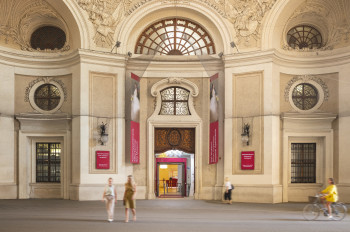
Vienna Hofburg served as the residence of many Austrian sovereigns in the past. The Habsburgs ruled from here as early as the 13th century. Until 1918, the Hofburg in the heart of Vienna was the centre of the monarchy. Today it is the centre of democracy, with the Federal President of the Republic of Austria residing here. The asymmetrical building has been steadily expanded over the centuries. It now covers more than 240,000 square metres, divided into 18 wings and 19 courtyards. Today, about 5,000 people live and work in around 2,600 rooms.
How to get there
The easiest way to reach the Sisi Museum is by public transport:
- The underground station is called Herrengasse
- The nearest tram station is Burgring
- The bus stop in front of the museum is the Hofburg stop.
If you are travelling by car, you can park in the Garage am Hof or in the Contipark underground car park at the Museumsquartier. However, it is much more advisable to travel by public transport.

